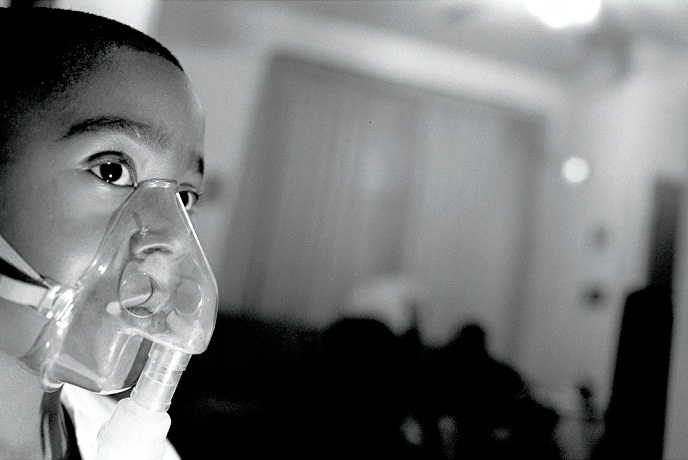
Chapter 25. Chapter 25: Air Pollution
What are the economic and societal costs and benefits of mitigating air pollution?

Guiding Question 25.5
What are the economic and societal costs and benefits of mitigating air pollution?
Why You Should Care
Air pollution was one of the major environmental issues at the first Earth Day in 1970, and the next two decades saw significant laws and regulations. Those regulations have decreased air-pollution levels across the country while allowing the economy, population, and fossil fuel use to all increase.
Today, those air-pollution levels are still creating environmental impacts from acid deposition, to human health impacts, to climate change. Even though air-pollution levels are lower than they were in 1970, they need to go lower still. Those changes will involve shifting away from fossil fuels and toward renewable-energy sources, and this will require a significant economic and social shift in order to succeed. Renewable sources are more expensive, but the gap is far less if we include the external costs of cleaning up the damage, paying for health impacts, and mitigating climate change.
These changes will have up-front costs to transition away from one technology and toward new technologies: This makes the transition unpopular among both industry and consumers (who may pay more for similar products). However, failing to transition costs us prolonged damage to ecosystems, increased death rates from asthma and indoor air pollution, and greater chances of climate change causing serious ecosystem shifts.
Test Your Vocabulary
Choose the correct term for each of the following definitions:
| Term | Definition |
|---|---|
| Regulations that set upper limits for pollution release. Producers are issued permits that allow them to release a portion of that amount; if they release less, they can sell their remaining allotment to others who did not reduce their emissions enough. | |
| Regulations that set an upper allowable limit of pollution release that is enforced with fines and/or incarceration. | |
| Free government money or resources intended to promote desired activities. | |
| A reduction in the tax one has to pay in exchange for some desirable action. | |
| Tax (fee paid to government) assessed on environmentally undesirable activities. | |
| First passed in 1963 and amended most recently in 1990, this U.S. law authorizes the EPA to set standards for dangerous air pollutants and to enforce those standards. |
1.
Which of the following strategies to decrease emissions is cap and trade?
| A. |
| B. |
| C. |
| D. |
2.
What advantages does cap and trade provide?
| A. |
| B. |
| C. |
| D. |
3.
Which of the following are NOT part of a command-and-control approach to pollution reduction?
| A. |
| B. |
| C. |
| D. |
4.
Which of the following is NOT part of how the Clean Air Act works?
| A. |
| B. |
| C. |
| D. |
5.
Why are cap-and-trade restrictions economically controversial to the polluting companies?
Short-Answer Questions
The Clean Air Act of 1970 and its subsequent amendments have lead to a 65% decrease in acid precipitation since 1976. But the increased regulation and scrubber technology to reduce SO2 release from power plants have focused regulation on the problem to transboundary air pollution. For example, New York State is significantly impacted by SO2 release from Ohio and Pennsylvania’s power plants. Also, New York State’s particulate matter releases impact New Jersey, Connecticut, and Massachusetts. The Clean Air Act was never intended to adjudicate a legal dispute about "who released what and where?"
In 2005, the EPA instituted the Clean Air Interstate Rule (CAIR) to monitor and track particular emissions from each state that was east of the Mississippi River (these 28 states contain both the majority of the pollution and the majority of the population of the United States). Each state would have a cap on the amount of each pollutant that could be released and was given the freedom to decide how to divide up that emission cap among its industries and residents.
1) One of CAIR’s stated goals was large reductions in SO2, NOx, and O3 levels (all decreasing by at least 44% by 2015) without increases in electrical costs. Why were industries that use or generate electricity considered important but not residents that used gasoline and diesel fuel?
2) By placing caps on what each state could release, why was CAIR not explicitly a cap-and-trade system and more of a command-and-control system?
3) In 2010, CAIR’s program shifted to designing a cap-and-trade market for the emissions. How does a cap-and-trade system make it easier for industry to transition to the higher CAIR standards?
Also, prices of gasoline and diesel fuel are volatile for other reasons and individuals are more likely to accept those changes.
2) Without a market for the excess emissions to be traded, it cannot be a cap-and-trade system. Command and control dictates levels for the state and requires the sources to meet those levels. In this setup, CAIR is closer to that system than a cap and trade.
3) Across the board, standards make it difficult for all industries to meet the new standard at the same time; some will require more time or more money to implement changes. Setting up a cap-and-trade market allows industries that are below their quota through lower use or increased technology to sell their extra emissions at a profit. This also allows the states to meet their goals faster (as long as the industries have an incentive to meet it).
Activity results are being submitted...